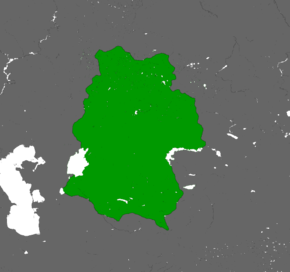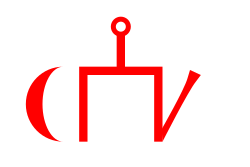Uzbecký chanát
| Uzbecký chanát Oʻzbek xonligi
| |||||||||||
Geografie
| |||||||||||
| Obyvatelstvo | |||||||||||
| Státní útvar | |||||||||||
dědičná monarchie | |||||||||||
Vznik | |||||||||||
Zánik | |||||||||||
| Státní útvary a území | |||||||||||
| |||||||||||
Uzbecký chanát (uzbecky Oʻzbek xonligi) byl šejbanidovský stát, který existoval v letech 1428–1471. Navzdory krátké době své existence patřil ke klíčovým mocnostem ve střední Asii. Ovládal nejen téměř celé území dnešního Uzbekistánu, ale i část dnešního Kazachstánu, Turkmenistánu a jižního Ruska. Prvním hlavním městem bylo Čimgi-Tura (dnešní Ťumeň v Rusku), pak to byl Signoq v dnešním Kazachstánu a nakonec krátce Iasy (dnešní Turkestán v Kazachstánu). Zakladatelem a jedním ze dvou panovníků chanátu byl Abu'l Chajr-chán, jemuž k moci významně dopomohl vládce Tímúrovské říše Ulugbeg, ovšem Uzbecký chanát pak získal řadu území právě na úkor Timurovců (například hlavní město Chórezmu Kuňja-Urgenč roku 1431). Část území uzmul také Zlaté hordě. Abu'l Chajrův syn a druhý chán Šejch Hajdar byl zabit v boji se Sibiřským chanátem, čímž se stát rozpadl. Abulchajrovská dynastie ale okolo roku 1500 vytvořila nový stát zvaný Bucharský chanát, do jehož čela se postavil Abu'l Chajrův vnuk Muhammad Šejbání.[1] Ještě před zánikem Uzbeckého chanátu se z něj odštěpila významná skupina nomádů, vedená Žanibekem a Kerejem, která pak založila Kazašský chanát. Abu'l Chajr padl právě v boji z Kazachy.
Reference
V tomto článku byl použit překlad textu z článku Uzbek Khanate na anglické Wikipedii.
- ↑ ABAZOV, Rafis. The Rise of the Uzbek Khanate. Příprava vydání Rafis Abazov. New York: Palgrave Macmillan US Dostupné online. ISBN 978-0-230-61090-3. DOI 10.1057/9780230610903_27. S. 60–61. (anglicky) DOI: 10.1057/9780230610903_27.
Média použitá na této stránce
No official flag.
Autor: DamiKarv, Licence: CC0
The territory that the Uzbek khanate controlled in 1448 when the khanate reached its peak
Autor: RootOfAllLight, Licence: CC BY-SA 4.0
A long triangular flag.
Autor: Vorziblix, Licence: CC0
The flag of the Golden Horde, as shown in Angelino Dulcert's 1339 map. A similar flag appears in the later Catalan Atlas (1375), providing corroboration.
See also Early Mongol Flags at crwflags.com:
- One of the charges is a crescent and the other looks like a simplified form of the tamga from the flag of Idel Ural. On different copies of the flag, the crescent has different size; it is often smaller than shown here, sometimes even reduced into a simple oblique stroke and conjoined with the other charge into a si[n]gle symmetrical object; the other charge also sometimes lacks the oblique part [2, 3]. It was obviously difficult to draw the charges always the same way. The cities with this flag which are easy to identify are [2, 7, 8]: Sarai, the capital (spelled Sarra) - there is also a depiction of the ruler, "Jani Beg Lord of Sarai" ("Jambech senyor de Sarra"); Tana, present-day Azov, Russia; and Urgench, Uzbekistan (spelled Organci, with a cedilla under the c; nowadays ruined). This flag is a variant of the flag of "Emperor of Sarai" ("Emperador de Sara") from "Libro del conoscimiento de los reinos" [7] and might be the one that had really existed, considering the similarity of its charges with those from the flag of Idel Ural.
- [2] Enciclopedia universal ilustrada, vol. XXI, Espan~a Madrid: Espasa-Calpe S.A., 1968
- [3] Istorija otkric'a i istraz<ivanja, vol. I: Poc<etak istraz<ivanja; Mladinska knjiga, Ljubljana, 1979; Original title: A History of Discovery and Exploration, vol. I: The Search Begins;(C) 1973 Aldus Books Limited, London
- [7] Libro del Conoscimiento. Viajes medievales, vol. I Madrid: Fundacio'n Jose' Antonio de Castro, 2005 ISBN 84-96452-11-5 (complete edition) ISBN 84-96452-12-3 (vol. I) [e9s50]
- [8] A[p]pendices. (Ibid.)
- Tomislav Todorovic, 21 April 2007
Autor: Samhanin, Licence: CC0
War flag of Khanate of Bukhara. This flag used in Khanate of Bukhara in the Battle of Marv by Muin Musavvir's painting.
Autor: HetmanTheResearcher, Licence: CC BY 4.0
Own work. Source: Lux-Wurm, P. C., & Zaragoza, Martha. (2001). Les drapeaux de l’islam : de Mahomet à nos jours. Buchet-Chastel. P.252-253.







